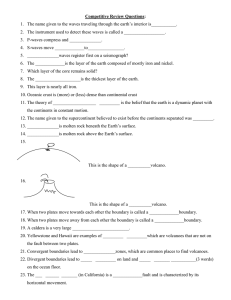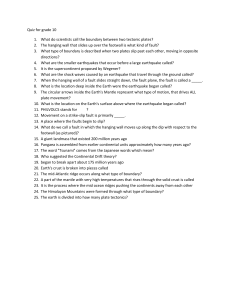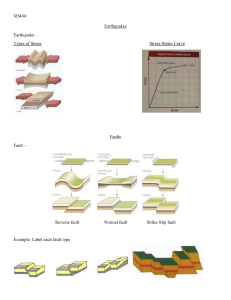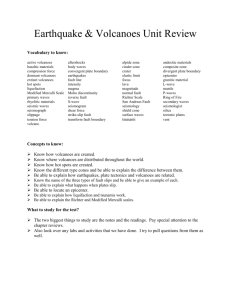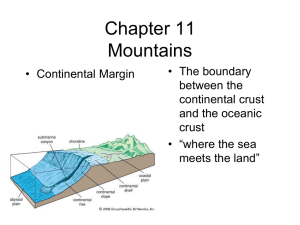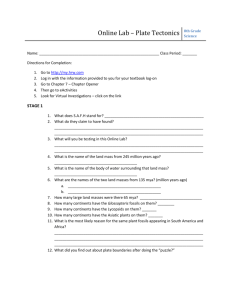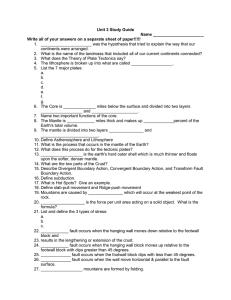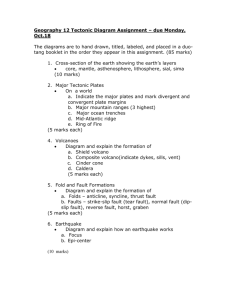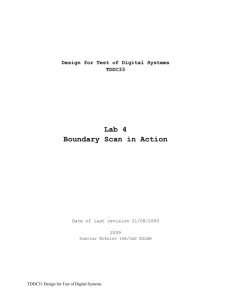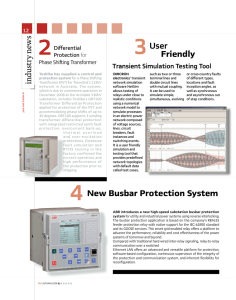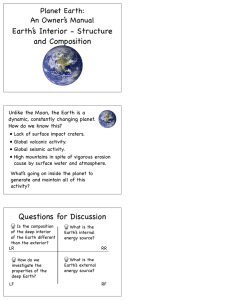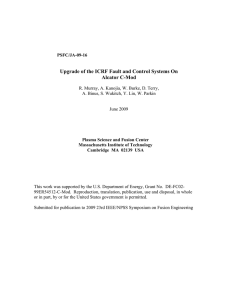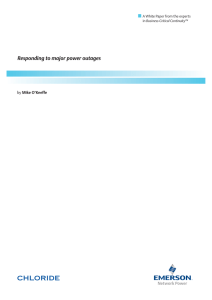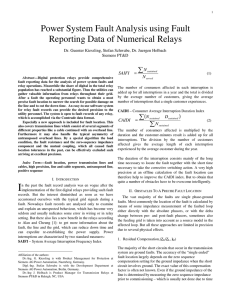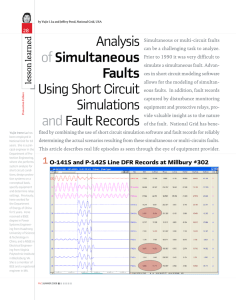Earth’s Interior Competitive Review Questions:
advertisement
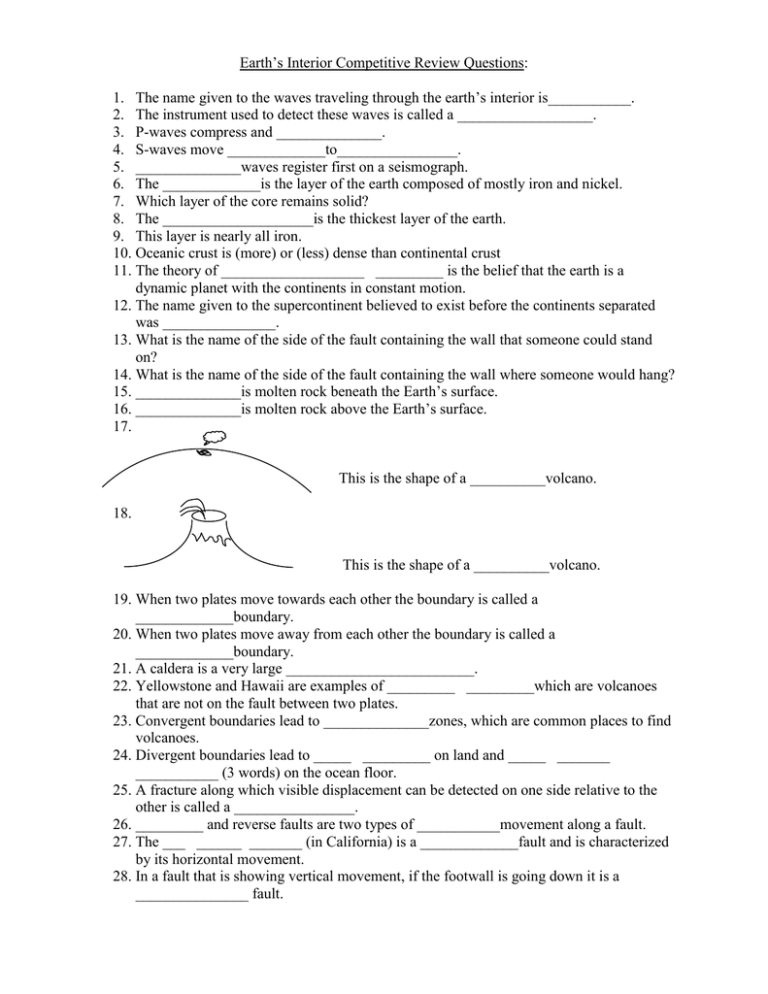
Earth’s Interior Competitive Review Questions: 1. The name given to the waves traveling through the earth’s interior is___________. 2. The instrument used to detect these waves is called a __________________. 3. P-waves compress and ______________. 4. S-waves move _____________to________________. 5. ______________waves register first on a seismograph. 6. The _____________is the layer of the earth composed of mostly iron and nickel. 7. Which layer of the core remains solid? 8. The ____________________is the thickest layer of the earth. 9. This layer is nearly all iron. 10. Oceanic crust is (more) or (less) dense than continental crust 11. The theory of ___________________ _________ is the belief that the earth is a dynamic planet with the continents in constant motion. 12. The name given to the supercontinent believed to exist before the continents separated was _______________. 13. What is the name of the side of the fault containing the wall that someone could stand on? 14. What is the name of the side of the fault containing the wall where someone would hang? 15. ______________is molten rock beneath the Earth’s surface. 16. ______________is molten rock above the Earth’s surface. 17. This is the shape of a __________volcano. 18. This is the shape of a __________volcano. 19. When two plates move towards each other the boundary is called a _____________boundary. 20. When two plates move away from each other the boundary is called a _____________boundary. 21. A caldera is a very large _________________________. 22. Yellowstone and Hawaii are examples of _________ _________which are volcanoes that are not on the fault between two plates. 23. Convergent boundaries lead to ______________zones, which are common places to find volcanoes. 24. Divergent boundaries lead to _____ _________ on land and _____ _______ ___________ (3 words) on the ocean floor. 25. A fracture along which visible displacement can be detected on one side relative to the other is called a ________________. 26. _________ and reverse faults are two types of ___________movement along a fault. 27. The ___ ______ _______ (in California) is a _____________fault and is characterized by its horizontal movement. 28. In a fault that is showing vertical movement, if the footwall is going down it is a _______________ fault.
